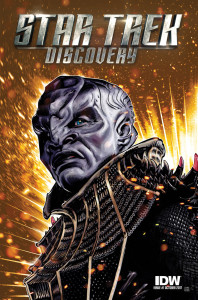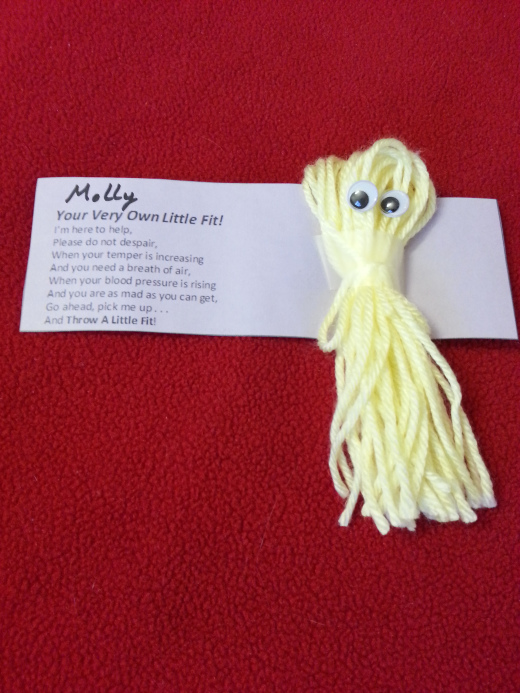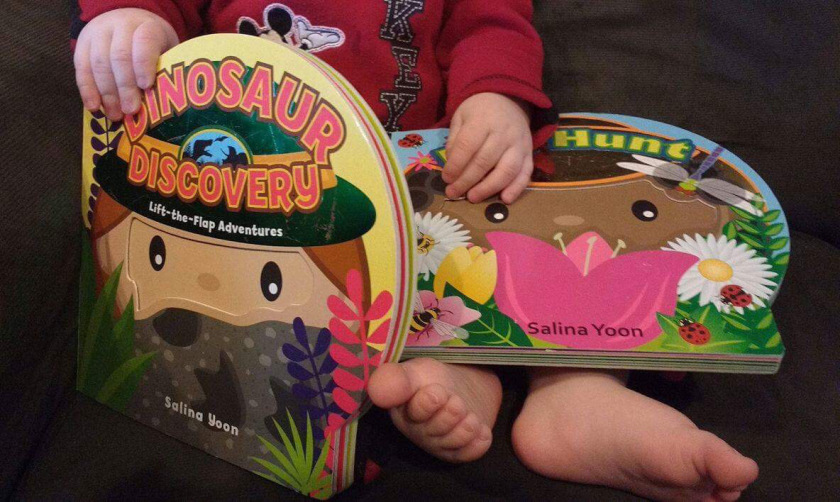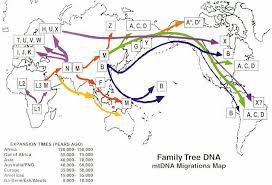 When Star Trek Discovery first aired this autumn it caused controversy amongst fans, particularly when it came to the appearance of the new Klingons. The race of warlike aliens first appeared in The Original Series and then were included in every subsequent series afterwards. In Discovery, the Klingons received a makeover that resulted in more head ridges and generally less hair. Despite the outrage from some fans, millions of viewers worldwide have tuned in to watch the show each week, following an epic story of war between Klingons and the Federation. Eventually the Klingons’ appearance became less of a talking point, thanks to some interesting dialogue, excellent set and costume design. A lot of the credit also goes to actors who have had to express complex emotions under layers of prosthetic makeup and solely in the Klingon language.
When Star Trek Discovery first aired this autumn it caused controversy amongst fans, particularly when it came to the appearance of the new Klingons. The race of warlike aliens first appeared in The Original Series and then were included in every subsequent series afterwards. In Discovery, the Klingons received a makeover that resulted in more head ridges and generally less hair. Despite the outrage from some fans, millions of viewers worldwide have tuned in to watch the show each week, following an epic story of war between Klingons and the Federation. Eventually the Klingons’ appearance became less of a talking point, thanks to some interesting dialogue, excellent set and costume design. A lot of the credit also goes to actors who have had to express complex emotions under layers of prosthetic makeup and solely in the Klingon language.
Star Trek Discovery starts with a Klingon named T’Kuvma who is attempting to unite the Klingon houses and bring the Empire back to its previous glory by waging a holy war against the Federation. T’Kuvma is an intriguing character, partly because he commands passionate loyalty from all those around him and partly because so little is known about him. It was this character that inspired Star Trek comics scribe Mike Johnson and Discovery series writer Kirsten Beyer to create IDW’s four-part Discovery comic, ‘The Light of Kahless.’ Joining Johnson and Beyer are artist Tony Shasteen, who has previously worked on the ‘Star Trek: Boldly Go’ comics and colour artist J.D. Mettler.
Issue one of ‘The Light of Kahless’ is a promising start to series. The story begins just after the Battle of the Binary Stars with a rather horrifying scene focusing on the Klingons eating the slain Captain Georgiou. The albino Klingon Voq, who has inherited the huge sarcophagus ship and crew from the deceased T’Kuvma, has doubts about his own ability to lead them. L’Rell, who we will come to see more of in the TV series begins to tell Voq T’Kuvma’s story.
What follows is a tale of how the nationalistic and patriotic war the Klingons wage against the Federation, was born out of imperial decline and corruption. Most of the action takes place on Qo’nos, the Klingon Homeworld. As a boy, T’Kuvma stumbles across the sarcophagus ship by accident and spurned on by his sister J’ula, begins his journey to becoming the impassioned leader we see in episode one of Discovery. Setting the plot before Discovery and focusing entirely on the Klingons is a wise move for Johnson and Beyer. It allows them to explore an alien species filled with individuals with their own dreams, ambitions, and vendettas and to humanise them in a way in which there was not time for in the television series. There are some nice references to already established Klingon culture such as a reference to Kahless the famous mythical Klingon hero and Boreth, the monastery that Worf trains at in The Next Generation episode ‘Rightful Heir.’
Johnson and Beyer’s writing is also authentically Klingon. The fact that the reader is not having to listen to or read Klingon (as compelling as the language is) does make the dialogue flow easier and the story smoother. The writers are creating some characters from scratch and it is a testament to their talent that J’ula, a feisty Klingon female with a lot of ambition, is as compelling as T’Kuvma himself.
The artwork of the comic is very evocative and a joy to look at. Some of the drawing is not overly detailed, but this is actually very effective. The shading and lines of the interior the sarcophagus ship suggests an ornate structure but allows the reader to use their imagination while also painting a picture of a society with rich decorative art. The new appearance of the Klingons may have caused controversy but they look very interesting in graphic novel form, casting wonderful silhouettes in several frames. Artist Tony Shasteen has also managed to accurately capture the likenesses of the characters from the TV show. J.D. Mettler has coloured the first few pages with a rich red colour palette creating some striking images, especially of pale Voq. The colour palate of T’Kuvma’s past is in blues, greys and greens, not colours a reader would normally associate with Klingons, but effective in illustrating an alien world that is slowly falling apart.
The are a few problems with the story however. For all the talk of epic destinies and honour, there is a lack of action. We also don’t get much sense of the degradation that is supposed to be pervading Klingon society at this point in time. There are a few scenes where T’Kuvma’s obnoxious uncle acts like an idiot, but there is no clear examples of the destruction of societal morals in the wider Klingon world. There is also no additional detail about the Klingon’s perspective of the Federation, which would make the comic tie in nicely with the show itself. However these are small quibbles in an otherwise impressive comic and this is only issue one. Viewed as part of a series, rather than a standalone comic, this is a promising start and we look forward to finding out what T’Kuvma gets up to next.

Star Trek Discovery #1 is now available from IDW Publishing.
- More






